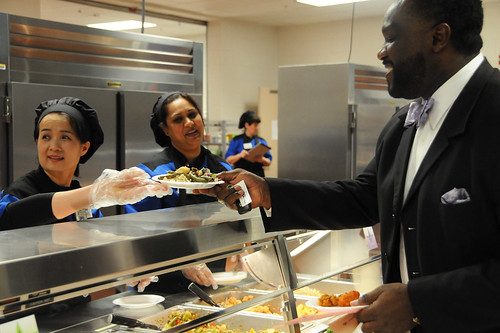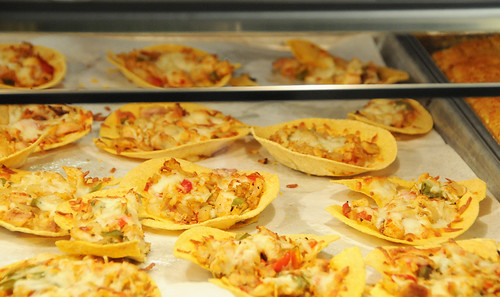
When you walk around many of the nation’s cafeterias, you will notice that plenty of changes have taken place on school lunch menus. Thanks to new standards and other efforts by the USDA, the lunches for our children have become healthier.
The new standards, which were implemented for the 2012-2013 school year, made significant improvements to the National School Lunch Program. Some of the changes include offering only fat-free or low-fat milk options, ensuring that fruits and vegetables are served every day of the week, and increasing the amount of whole grain-rich foods on menus.
USDA has a large role in making these healthy menu changes possible. The department’s Food and Nutrition Service (FNS) administers the National School Lunch Program while the Agricultural Marketing Service (AMS) purchases the program’s meats, poultry, fruits, and vegetables. In total, USDA purchases about 15 to 20 percent of the products in the School Lunch Program.
“We take pride in what we do here at USDA,” said AMS’ Commodity Procurement Branch Chief Duane Williams. “In the past couple of years, we made a concerted effort to purchase healthier products. Our team of experts has helped us do things like reducing the fat and sodium levels in many of our products.”

Recently, Patriot High School in Nokesville, Va., held a food tasting. This open house invited all of the students and parents in the Prince William County School District to sample some potential foods that may be on the menu next year. A team of USDA employees got a chance to participate in the event and see children enjoying the healthier options. “It’s great to see these children eating the foods we purchase and trying some new dishes too,” said Williams.
When looking around the crowded cafeteria, there were examples of change in every dish. Children sampled things like edamame salads, spicy chicken breasts, sweet and sour chicken, and chick pea salads. Many of the foods featured at the event were purchased by USDA, including chicken fajita meat used to make chicken tostadas and the beans and raisins that starred in a sweet rice dish. From the smiles and positive reactions from the taste testers, it’s obvious that the dishes were a hit and that the palettes of school-aged children have evolved over the years.

FNS’ Program Support Branch Chief Laura Walter observed that “schoolchildren are becoming sophisticated eaters.” Walter also mentioned that FNS has “adjusted the foods in the program to meet the changing demands of students.”
Another element of change in school meals programs is the increased student involvement in menu planning. “The recipes for the foods featured at the Patriot High School food tasting were developed by employees,” said Serena Suthers, Prince William County Food Service Director. “But during the event, students and their parents were able to provide feedback about the items.” This enables children to participate in the menu selection process and develop an appreciation for finding creative ways to make the menus healthier. Students also now participate in programs like Recipes for Healthy Kids to team up with chefs and others in the community to develop recipes for items on their school’s menu.
USDA is excited about the improvements to the National School Lunch Program. Events like the food tasting at Patriot High School are an important step in getting communities excited about the healthier options as well.
To read more about the food tasting event at Patriot High School, see this article in USA Today.



